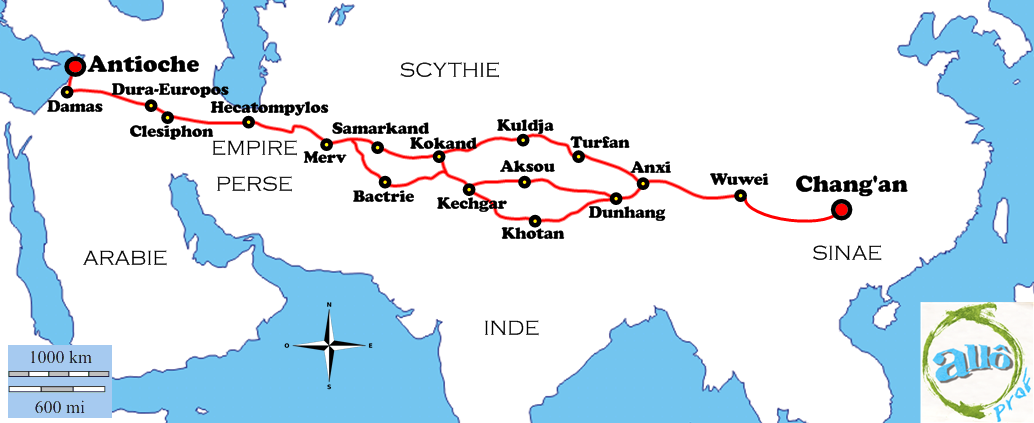The concepts covered in this fact sheet go beyond those seen in high school. It is intended as a supplement for those who are curious to learn more.
The Silk Road is a trade route linking Asia and Europe, more specifically the city of Chang'an (in China) to that of Antioch (in Syria).
The route was used from the 2nd century BC until the 15th century, when it was gradually abandoned in favor of sea routes. Its name derives from the fact that silk, a highly prized European commodity for many years, was transported here. The route also enabled the exchange of many other goods. In addition to silk, it carried gold, textiles, ivory, coral, precious stones, furs, ceramics, bronze weapons and various spices.
China was the sole producer of silk until the 5th century (it was the only country to know the manufacturing process). Silk is an in-demand luxury product. It can even be used as currency. In fact, the State has already used it to pay its civil servants.

The silk road.
Note : An image in English is coming soon.
Exchanges along the Silk Road are not just material. The Silk Road enabled the transmission of new knowledge and cultural elements between peoples. Buddhism spread along the Silk Road for several centuries. New techniques were passed on: Asian peoples discovered paper-making and learned to cast iron thanks to the Chinese. The Silk Road even led to the creation of one of the greatest empires of all time: the Mongol Empire.